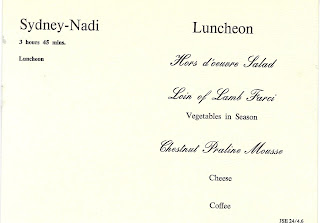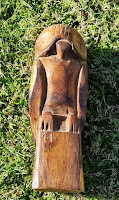In April 1976 we travelled to Fiji for a holiday. Leaving Melbourne on 3 April, we flew to Sydney where we stayed overnight. Next day we boarded a Qantas flight to Nadi - a flight lasting 3 hours 45 minutes. We were served lunch on the plane.
Fiji is made up of many islands, the largest being Vita Levu and Vanua Levu. Our holiday was spent on Vita Levu.Our first night in Fiji was spent at the Mocambo Hotel (now the Novotel) near Nadi Airport.The hotel, a short distance from the airport, was set in tropical gardens. A pleasant introduction to the island.Next day we boarded a coach to travel to The Fijian resort (now the Shangri-La) on Yanuca Island, the main location for our holiday. Yanuca Island is 54 kilometres south of Nadi - a drive taking a little more than one hour. There is a bridge leading to the island.In 1976 we didn't have digital cameras and we had to wait until the film was developed before we could view the photos we took, usually after we arrived home. Consequently the number of photos taken was small compared with numbers of photos taken on a holiday taken today. Unfortunately colour photos taken in the 1960s , 1970s and even 1980s had a tendency to fade, even when kept in an album. Therefore we often purchased postcards as well to help us remember the holiday.
















































